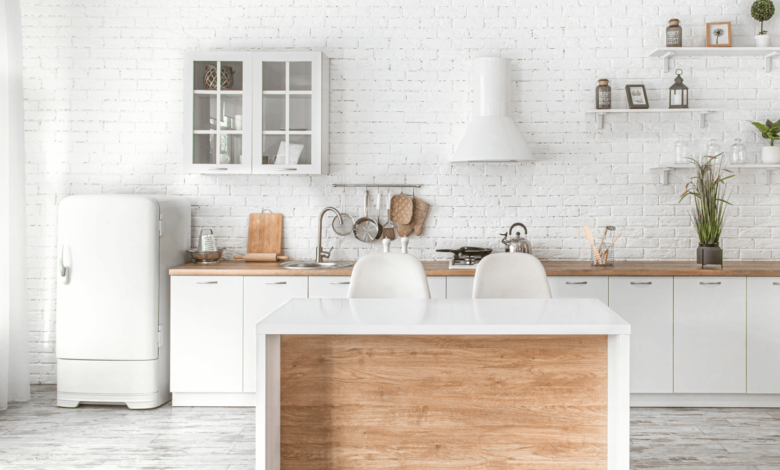Choosing the Right Marble for Counter: A Comprehensive Guide for Homeowners

When it comes to luxury and elegance in kitchen design, nothing quite matches the timeless appeal of marble for counter surfaces. Its natural veining, soft textures, and unique color palettes have long been a symbol of refined taste. However, choosing marble for kitchen counter installation isn’t simply a matter of aesthetics. There are practical, financial, and maintenance-related considerations to take into account before selecting the best marble for kitchen counter or marble for kitchen counter top in your home. This guide dives deep into the world of marble, helping you make informed decisions about types, grades, finishes, and the best options for long-term value and functionality.
Understanding Marble: Nature’s Elegant Stone
Marble is a metamorphic rock composed primarily of recrystallized carbonate minerals, most commonly calcite or dolomite. Formed under intense pressure and heat over millions of years, marble is prized not just for its durability, but for its luxurious appearance. The dramatic veins and wide variety of natural colorations—ranging from classic whites and grays to greens, pinks, and deep browns—make it a favorite among designers and homeowners alike.
What sets marble for counter top applications apart is its unique capacity to add both value and visual impact to kitchens, bathrooms, and even commercial spaces. However, it’s important to note that not all marble is created equal. Some varieties are harder, more stain-resistant, and better suited to kitchen environments than others. The key is selecting a type of marble for kitchen counter that balances aesthetics with practical performance.
Types of Marble Commonly Used for Kitchen Counters
When searching for the best marble for kitchen counter, several types consistently rise to the top of expert recommendations. Each comes with its own unique advantages and limitations, so it’s crucial to understand their characteristics before committing.
1. Carrara Marble
Perhaps the most recognized variety, Carrara marble originates from Italy and features soft veining and a predominantly white or blue-gray background. It’s one of the more affordable options, making it accessible for homeowners who desire marble’s appeal without breaking the bank. However, it’s also relatively porous and requires frequent sealing, which might be a concern in high-use kitchens.
2. Calacatta Marble
Often confused with Carrara, Calacatta marble is also Italian but tends to be rarer and more expensive. It’s characterized by its bold, dramatic veining and pure white background. This makes it one of the most luxurious and visually striking choices for marble for counter installations. It’s ideal for homeowners who want a standout island or focal point.
3. Statuario Marble
A hybrid between Carrara and Calacatta, Statuario marble boasts a crisp white base with distinctive gray or gold veining. It is highly prized for its elegance and is typically used in high-end kitchens. However, like other marble varieties, it requires regular sealing and gentle cleaning.
4. Danby Marble
Quarried in Vermont, Danby marble is a popular American alternative to European types. It’s denser and less porous than Carrara, offering better stain resistance. Its durability and creamy tones make it a practical and aesthetically pleasing option for busy kitchens.
Choosing the right type of marble for kitchen counter top often comes down to balancing appearance, price, and performance. If budget allows, Calacatta or Statuario offer unmatched luxury, while Carrara and Danby provide affordability and practicality.
Pros and Cons of Marble Countertops
Before finalizing your decision, it’s essential to weigh the pros and cons of using marble for kitchen counter surfaces.
Pros:
- Timeless beauty: No two slabs are alike. The natural veining and color variations make marble a one-of-a-kind addition to your kitchen.
- Cool surface: Ideal for baking, marble remains cooler than many other materials, making it a favorite among pastry chefs.
- Resale value: Marble can increase a home’s market value and appeal to luxury buyers.
- Customizability: Marble can be honed, polished, or leathered to achieve different looks and textures.
Cons:
- Porosity: Marble is susceptible to staining from acidic foods and liquids unless properly sealed and maintained.
- Scratching: It is softer than granite or quartz, meaning it can scratch more easily with knives or heavy use.
- Maintenance: Marble requires periodic sealing and specialized cleaning products to maintain its finish.
- Cost: High-end varieties like Calacatta and Statuario can be quite expensive.
Despite its downsides, many homeowners agree that the elegance and natural beauty of marble for counter applications outweigh the maintenance it requires, especially when proper care is taken.
How to Maintain Your Marble Kitchen Countertop
To ensure your marble for kitchen counter top remains stunning over the years, it’s important to establish a consistent care routine. Marble’s soft and porous nature means that it absorbs spills and scratches more readily than synthetic materials. Fortunately, with the right steps, you can significantly extend the lifespan and appearance of your marble surfaces.
1. Sealing:
Apply a high-quality sealant upon installation and reapply every 6–12 months, depending on use. Sealants act as a barrier, preventing moisture, oil, and acids from penetrating the surface.
2. Daily Cleaning:
Use a soft cloth or sponge with warm water and pH-neutral soap. Avoid harsh cleaners with acidic or alkaline ingredients, as these can dull the finish or cause etching.
3. Stain Management:
Immediately blot—not wipe—spills, especially those from wine, citrus, vinegar, or tomatoes. These acidic substances can leave permanent marks if left untreated.
4. Protection:
Use cutting boards, trivets, and coasters to prevent scratches and heat damage. Avoid placing hot pots directly on marble surfaces, as thermal shock can cause cracks.
5. Polishing (Optional):
Over time, honed or polished marble may lose some of its luster. Periodic professional polishing can restore shine and remove light scratches.
Alternatives to Marble: How Do They Compare?
If you’re on the fence about using marble for counter top installations, it’s worth comparing it with other popular countertop materials.
- Granite: More durable and less porous than marble, but generally lacks the refined elegance.
- Quartz: Engineered stone that mimics marble with fewer maintenance requirements, but lacks natural variation.
- Soapstone: Durable and stain-resistant, but has a more rustic appearance.
- Concrete: Customizable and modern, though prone to cracking and staining without proper care.
While these materials offer specific advantages, none quite replicate the natural charm and depth of true marble for kitchen counter use. For homeowners prioritizing beauty and uniqueness, marble still stands tall.
Final Thoughts: Is Marble Right for Your Kitchen?
Choosing the best marble for kitchen counter surfaces ultimately comes down to your lifestyle, budget, and design preferences. If you’re someone who appreciates classic elegance and is willing to put in the effort to maintain your investment, marble can be an extraordinary choice. For families with heavy kitchen use or those averse to regular upkeep, a different material might be a more practical solution.
Nonetheless, the enduring appeal of marble for counter applications cannot be overstated. Whether you choose a pristine Calacatta slab for a statement island or a more subdued Carrara for everyday elegance, marble offers a unique combination of function and luxury that few materials can rival.
Quick Tips for Selecting Marble for Countertops
- Always inspect slabs in person to appreciate their veining and texture.
- Request samples to test with typical kitchen substances.
- Work with a reputable fabricator who specializes in marble installation.
- Consider edge profiles—bullnose, ogee, or eased—for both style and function.
- Invest in proper sealing and cleaning products from the outset.
Conclusion
The decision to use marble for kitchen counter tops involves more than picking a pretty stone. It requires understanding the types of marble available, evaluating the pros and cons, and committing to the care necessary to keep it looking its best. Whether you opt for the classic charm of Carrara, the luxury of Calacatta, or the practicality of Danby, marble countertops are an investment in both style and substance. With proper maintenance and thoughtful selection, your marble for counter installation can serve as the centerpiece of your kitchen for decades to come.



